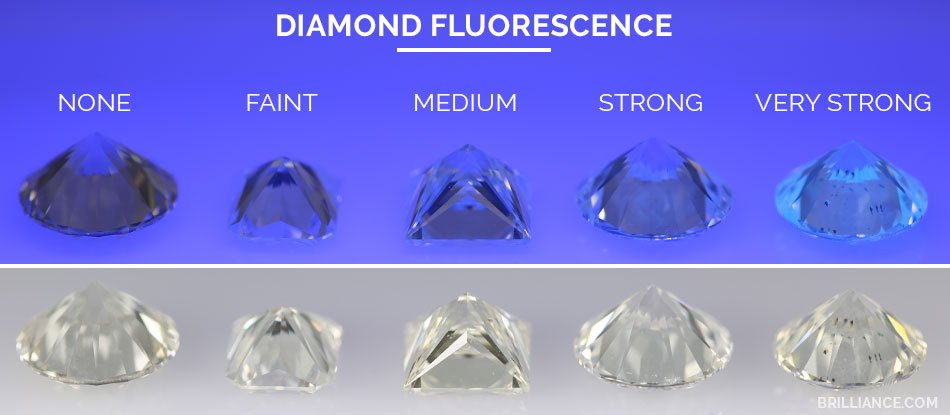Fluorescence is a form of light that is produced when ultra violet light enters a diamond. Most diamonds contain some degree of fluorescence, which ranges from very slight to very strong. Some diamonds contain little or no fluorescence which raises their value.
Sunlight and most forms of indoor light contain small amounts of UV light. However, in most cases, the fluorescent light emitted does not effect a diamond's appearance. Fluorescence is most evident when a diamond is placed under a UV lamp in a dark room. Under these conditions, a diamond will appear to have a blue glow. Some diamonds will appear to have a yellow or even a green glow. We suggest avoiding diamonds with a green or yellow tint.
Fluorescence has little or no effect on the appearance of most diamonds, and in diamonds with a color rating of J or lower, it may even enhance appearance. The blue glow of the fluorescent light and the yellow tint of the diamond tend to cancel each other out. However, diamonds in the colorless range (D to F) may be affected by fluorescence. These diamonds may appear milky or oily due to their fluorescence. When purchasing a colorless diamond (D-F), we recommend selecting one with little or no fluorescence.
Remember, when determining an acceptable level of fluorescence, be sure to base your choice on the diamond's color. A commonly accepted rule of thumb tells us that:
- The higher (colorless) grades, D through F, may be adversely effected by fluorescence. They may appear milky or oily. Visually inspect.
- The middle grades, G through I, appear to have some tolerance for fluorescence. Mild to moderate amounts of fluorescence can have no impact.
- The lower grades, J through M, can actually have their appearance improved by fluorescence. The blue of the fluorescent light, and the yellow tint from the diamond will have a tendency to cancel each other out, allowing the diamond to look whiter.

Fluorescence from brilliance.com
